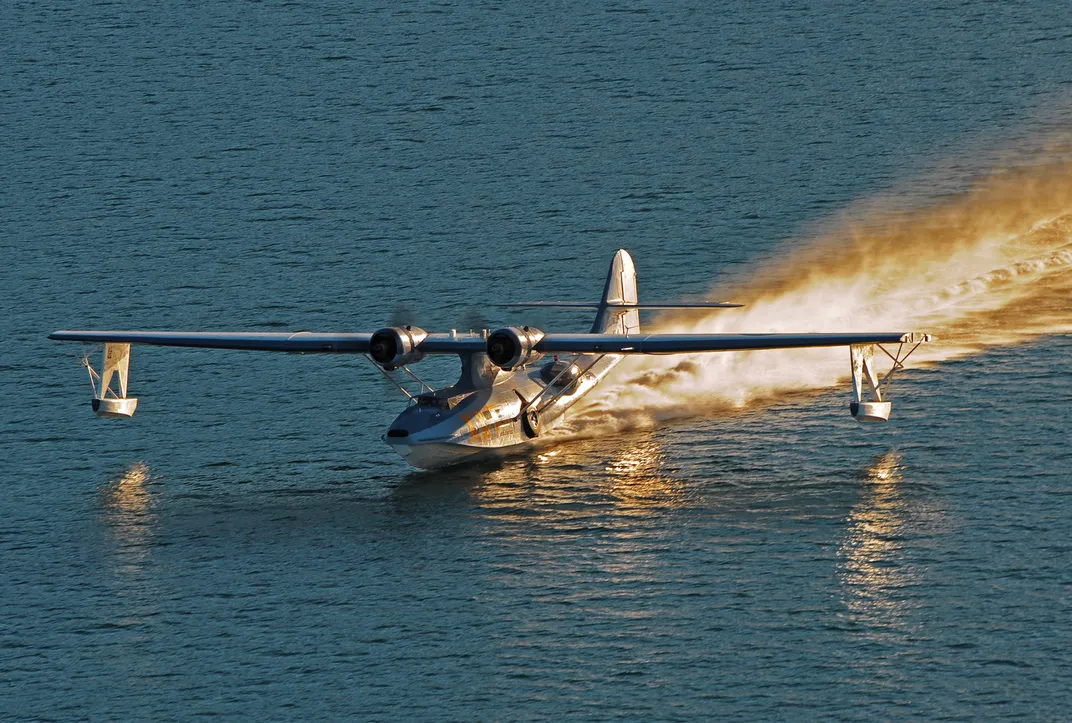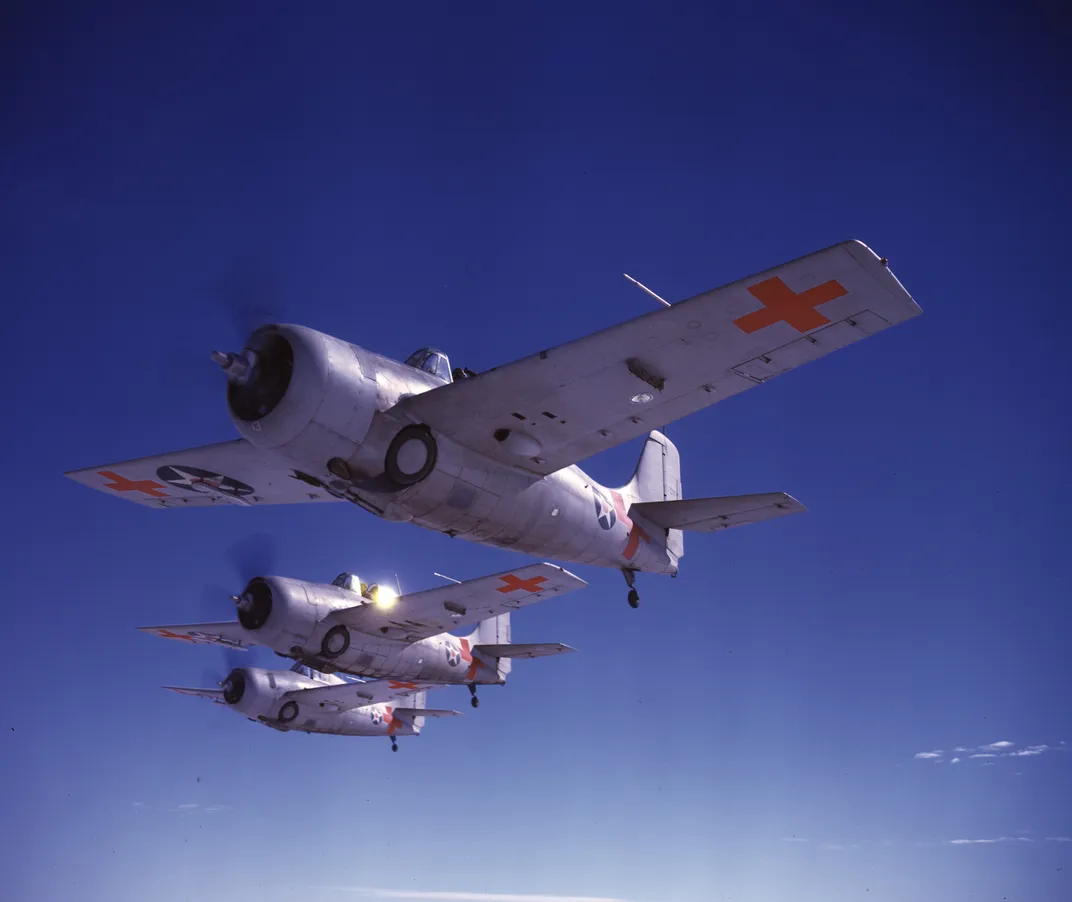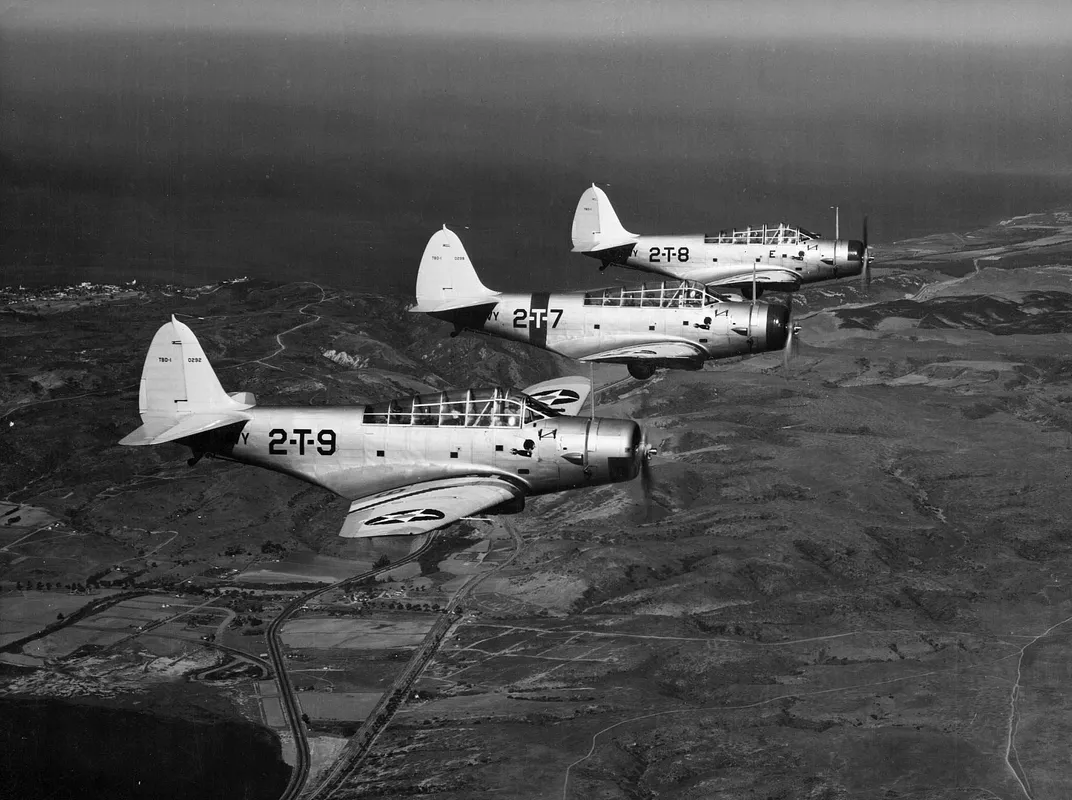The Douglas Dauntless and Other Heroes of Midway
/https://tf-cmsv2-smithsonianmag-media.s3.amazonaws.com/filer/ba/df/badf4e2e-4b6c-4bf5-846d-e63a60c3537d/dauntless.jpg)
With the world’s largest carrier fleet, the Japanese navy ruled the Pacific in the first half of 1942, a time when naval tactics were changing from ships pounding away with guns to aerial battles fought by carrier-based aircraft. At Midway, the opposing fleets never came within sight of each other.
Having been tipped off to Japanese plans by U.S. cryptographers, the Navy sent Consolidated PBY Catalina flying boats from Midway to search hundreds of miles of ocean. It was a Catalina crew who spotted the Japanese fleet.
From three U.S. carriers, Grumman F4F Wildcats flew escort for the slower Douglas Devastator torpedo bombers and Douglas Dauntless dive-bombers, which would attack the Japanese ships. But timing the departures of these airplanes, with their different speeds and cruising altitudes, proved difficult. Whole squadrons of Wildcats wasted most of their fuel waiting for the slower airplanes to take off. Others got lost and had to return to the carrier without even sighting the enemy.
The Devastators were particularly easy prey, since they dropped their torpedoes while skimming as low as 100 feet over the water. The Wildcats did what they could against Japanese Zeros, but they were outnumbered, and their opponents’ climb rate was three times greater. Of 41 Devastators launched, four made it back to their ships.
In the first three hours of the battle, not a single U.S. bomb or torpedo had hit a Japanese ship, despite eight separate attacks by a total of 94 airplanes. Then the tide turned. In an oral history recorded years later, Wildcat pilot Jimmy Thach recalled trying, with five other pilots, to hold off the Zeros: “The air was just like a beehive.... I was utterly convinced that we weren’t any of us coming back because there were still so many Zeros.... And then I saw a glint in the sun that looked like a beautiful silver waterfall. It was the dive-bombers coming in.” While Wildcats and Devastators had kept the Zeros busy, Dauntlesses from the Yorktown and Enterprise had gotten through.
In the space of eight minutes, Dauntless pilots dropped bombs that fatally damaged three of the four Japanese carriers. Japan’s navy never regained the upper hand.
Back to A History of WW2 in 25 Airplanes
Next: The Fighter That Shot Down Yamamoto
Last: P-39s of the Cactus Air Force


